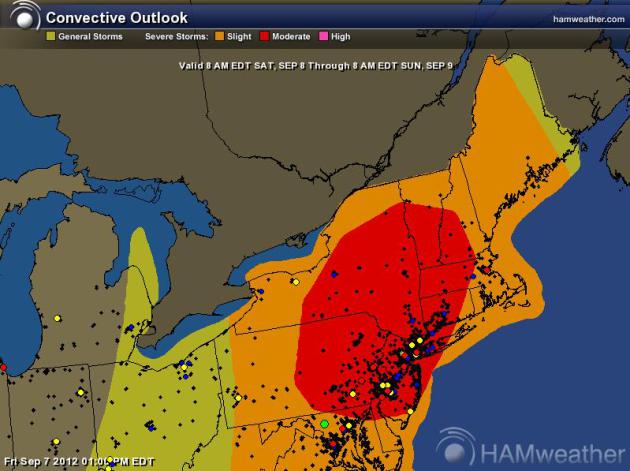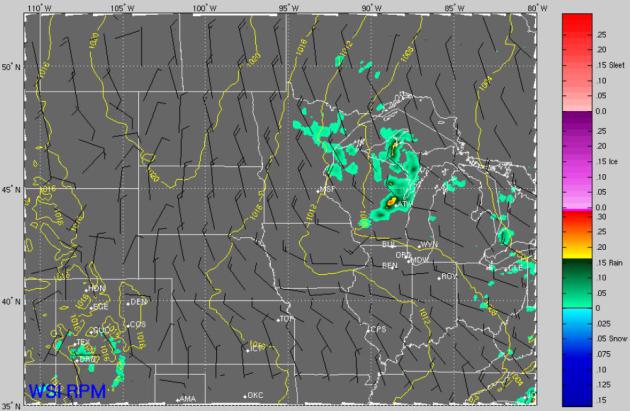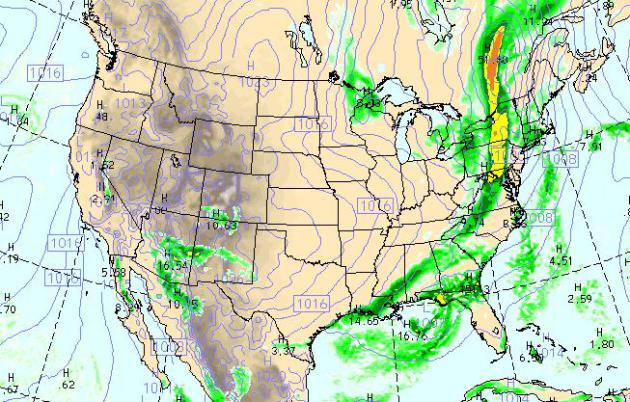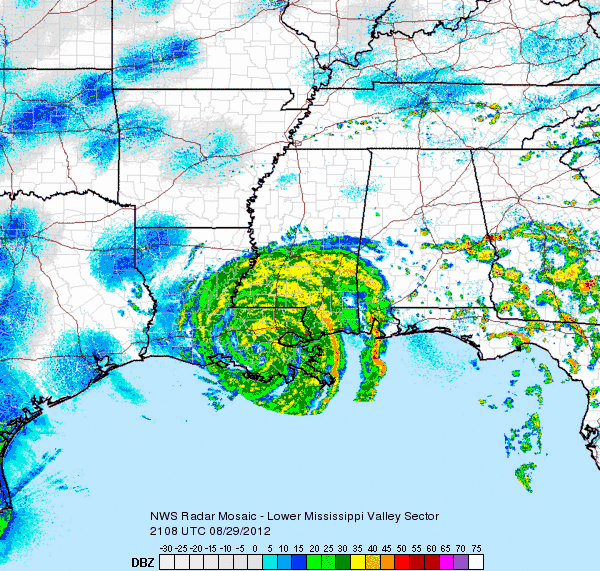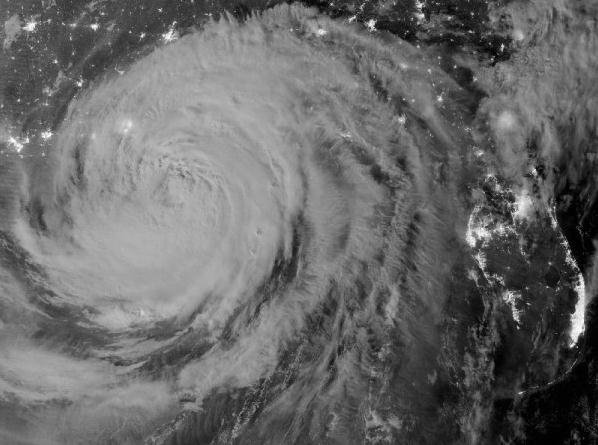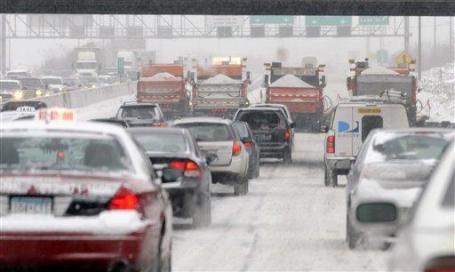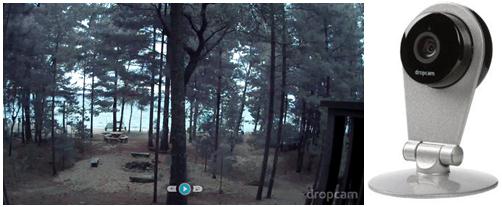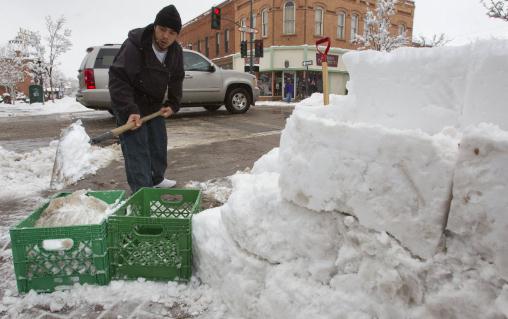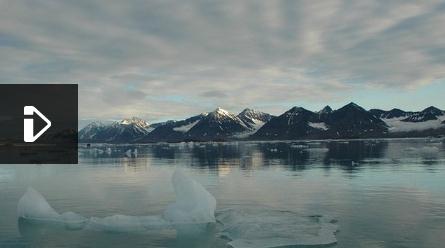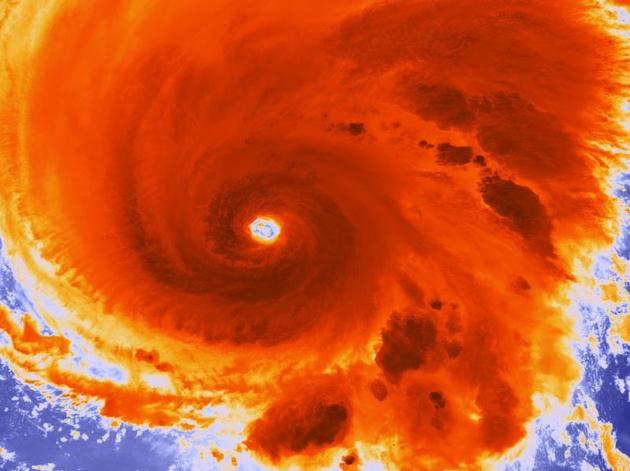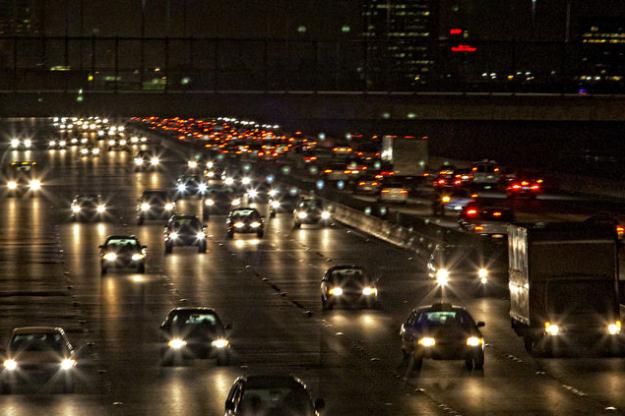September 10. Date Atlantic/Caribbean hurricanes are most likely to reach the U.S. mainland. It marks the peak of the hurricane season.
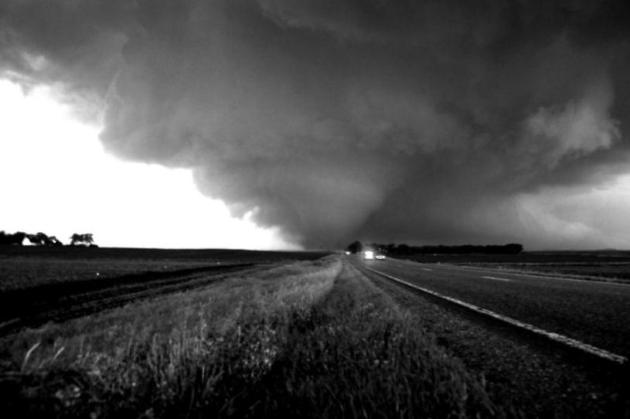 3
3 "moderate risk" days for severe thunderstorms in September
in the last 15 years. Source: Greg Carbin, NOAA:
September
1, 2002, valid for September 2, 2002
September
21, 2006, valid for September 22, 2006
September
7, 2012, valid for September 8, 2012
September Tornado Outbreak? SPC has issued a
"moderate risk" for much of the northeast, including Albany, Hartford,
New York City, Philadelphia and Harrisburg. There is a greatly elevated
risk of large hail, damaging straight-line winds, even a few long-track,
long-lasting violent tornadoes later today. I expect tornado watches
(and warnings) to be issued. Map above: SPC and Ham Weather.
Alberta Clipper. A weak, upper-level storm (wrinkle
of cold air aloft) may spark a few spotty showers from the Minnesota
Arrowhead into Wisconsin. Right now it looks like the showers won't
quite reach the MSP metro, but if you're driving east of the St. Croix
the chance of PM showers will increase. 12km RPM model courtesy of WSI.
4 pm Today. The WRF model shows a squall line
developing by late afternoon, sweeping across the northeast, capable of
hail, damaging winds, even tornadoes. The same eastbound cool front
sparks T-storms from the Carolinas to New Orleans, dry weather
persisting west of the Mississippi River.
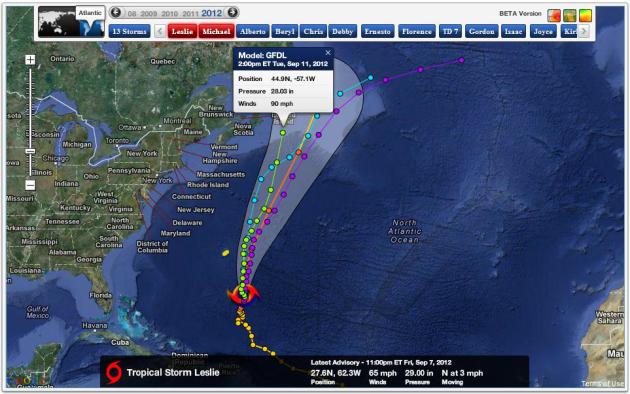 "Leslie"
"Leslie".
Yes, this hurricane is confounding the experts down at NHC. Yesterday
it was demoted from a hurricane to a tropical storm. As of late last
night it packed 65 mph winds, creeping north at only 3 mph. Models
continue to show strengthening, the core of Leslie passing well east of
Bermuda, possibly reaching Newfoundland, Canada with 90 mph winds by
next Tuesday. Map: Ham Weather.
"
Here's what makes the general silence on climate and the mocking
from the self-identified pro-business party so absurd: tackling climate
change is the smartest thing we can do for both our public health and
our private sector. Reducing carbon emissions from our power plants,
cars, and factories cleans the air and saves a lot of money." - from an Op-Ed at Bloomberg, details below.
"...
The good news is that creating businesses that will power our
growth, and reduce our carbon output while protecting resources, is also
the greatest wealth-generating opportunity of our generation. [There is
no] choice between growth and reducing our carbon output." - Sir
Richard Branson, quoted in a Bloomberg article below.
6 lowest Arctic sea ice levels on record all occurred in the past 6 years. Source: Wall Street Journal.
$3 billion in damage from Hurricane Isaac, with 40 deaths reported. Details below at earthsky.org.
13,000 homes damaged or destroyed by Isaac in Louisiana alone. Radar loop above: NOAA, earthsky.org.
Second wettest summer on record for the U.K. Only 1912 was wetter.
Dryness Continuing Into September. Dr. Mark Seeley has more details on the expanding, deepending drought across Minnesota in this week's installment of
Minnesota WeatherTalk; here's an excerpt: "
Not
only was the 12-day run of the State Fair dry (only .08 inches), but
the drought picture worsened across the state according to the latest
US Drought Monitor. Some southwestern and south-central counties (9 in
total) were placed in the Extreme Drought category this week, while
many others continued to be in the Severe Drought category (another 23
counties). Little widespread rainfall has occurred across the state
since the week of August 22nd. Normal amounts of September rainfall
range from 2.50 to 3.50 inches, but the first week of September brought
little relief to most places. Only Orr (1.12"), Rushford (1.15"), Lake
City (1.16"), Preston (1.34"), and Lanesboro (1.40") reported over an
inch during the first week, while Caledonia received 2.57 inches. Much
of this fell with the thunderstorms that crossed the state on
September 4th bringing high winds and hail to many areas."
A Look Back At Hurricane Isaac. Some interesting details from
earthsky.org: "
Hurricane
Isaac, the 9th named storm and 4th hurricane of the 2012 Atlantic
hurricane season, caused plenty of problems across portions of
Hispaniola and the United States during the last week of August. Isaac’s
slow movement after making landfall in the U.S. resulted in large
flooding across Louisiana and through neighboring states. The slow
movement brought upon more tropical moisture to push into the southeast
providing flash flooding for parts of Mississippi and Alabama. For some
areas, the threat for severe weather and tornadoes were a huge concern."
Image credit above: "
Visible Infrared Imaging Radiometer
Suite on the Suomi-NPP satellite captured this nighttime view of
Hurricane Isaac and the city lights early on August 29, 2012." Image Credit: NASA.
Awareness Of Flood Risks Remains Low: Swiss Re Report. Here's an excerpt of an interesting story at
Business Insurance: "
No
other natural catastrophe affects as many people as flooding, but
awareness of flood risks and their impact remains relatively low,
according to a report released Thursday by Swiss Re Ltd. The report,
“Flood — An Underestimated Risk: Inspect, Inform, Insure,” says that
insured flood losses have increased significantly in recent decades,
amounting to $15 billion in 2011. The report says that population
growth, higher concentrations of assets in exposed areas and climate
change are among the factors contributing to the increased cost of
flooding."
We Need Ratings For Snowstorms And Heat Waves. I've
written about this in the past, especially when it comes to snowstorms. A
newspaper in Grand Forks gave major winter storms names of famous local
hockey players and politicians years ago, but it didn't last. A rating
scale from 1-5, much like tornadoes and hurricanes, might make more
sense, and help to set expectations. Isaac was, on paper, a Category 1
hurricane, but the size of the storm and central pressure made it
something closer to a Category 2-3 storm, as described in this post at
The New York Times; here's an excerpt: "
...For
instance, Isaac was rated as a Category 1 storm at its peak intensity,
but it was Category 1 only in terms of its maximum wind intensity. Its
central pressure, of 964 millibars, would have given it a weak
Category 3 rating, and its storm surge qualified it as a Category 2 or
3. Its size, had that been a consideration, would probably have ranked
as a 4. So if we had a weighted ranking system, Isaac would have come
in as slightly over a 2.5 storm. The billions of dollars of damage
caused by Isaac and its impact on the affected region would have
justified this higher ranking."
"Ask Paul". Weather-related Q&A:
Dear Mr. Paul Douglas-
"Here is the yearly question on where & when to
view the best fall colors in MN. Pardon me if you already answered this
question, can you send me the link if so?
1. Where in Minnesota is Peak fall color going to be the best on Oct 1st? (given the choices of North Shore- Gooseberry falls, Hinckley, Stillwater, Red Wing, Winona)
2. Is
it true north shore colors are better than red wing – winona area
because north shore had better rain fall and southern MN in drought?
3. When do you forecast peak colors for Gooseberry falls area?
4. When do you forecast peak colors for red wing – Winona area?
I realize the Minnesota DNR has this info, but I’m banking on your help for a romantic fall getaway with my lovely wife!"
Thank you,
Steve Grimm, Sales Estimator
Advanced Response Systems
Steve - you are a hopeless romantic. God knows you could teach me a
trick or two. Sadly, I am a bewildered meteorologist; the science of
leaf-tracking is a niche within a science within a science. I too have
to rely on the Minnesota DNR, which has a
comprehensive list
of parks and trails with the latest leaf-watching conditions. That
said, your best bet on October 1 should still be The North Shore, 30-90
minutes north of Duluth. That would be my first choice. It does seem
like the drought is accelerating color this year, so you may run into
pockets of amazing color closer to Hinckley and Sandstone as you drive
up I-35 (nasty construction, leave extra time). Historically leaves peak
in the metro in mid-October, but it may be a week or so earlier this
year. Good luck.
Earthquake-Resistant Bed Can Withstand 65 Tons Of Falling Debris.
Come to think of it, this might not be a bad idea the next time an F-4
tornado catches me snoozing. For your friends in L.A. and the Bay Area?
Details from
gizmag.com: "
Following the lead of the Earthquake-proof school desk,
Wood Luck is an earthquake resistant bed that can withstand up to 65
short tons (59 metric tonnes) of falling debris. Designed by Shinko
Industries, the bed has been built to give users some “good luck”
protection during an earthquake. And with the ability to withstand 65
tons of tumbling detritus, it may just become a lifesaving piece of
furniture during an emergency situation."
Favorite recent gadget ("productivity tool"):
Dropcam. If you're looking for a way to keep an eye
on your home or cabin, or dock, or anything, and you have a WIFI signal
you can tap into - this is a terrific solution. It sets up in 5 minutes,
for PC or Mac, and sends back a live, HD stream accessible on any
desktop, tablet or smartphone. Pretty slick. You can even sign up for a
DVR service that records video from each webcam, so you can go back and
see if the kids were trashing the lakeshore 36 hours ago. It includes
audio (I can hear the hawks and crows up at my place north of Brainerd);
you can even speak into the system and talk to someone at the other
end. 2-way audio? What will they think of next. $149 from
amazon.com. And no, I don't get a commission.
What I'm reading (as if anyone cares):
"Mother of Storms". A Category 12 hurricane? O.K.
This is set in the future (2028), and a sudden and catastrophic release
of methane in the Arctic has warmed the oceans to the point where
mega-hurricanes now circle the globe. Science fiction? I sure hope so.
Rating Winter Storms?
There was a time when a newspaper in Grand Forks
named big winter storms after local hockey players and politicians.
Interesting idea.
In recent years NOAA
has been testing a 1-5 rating scale for major winter storms, to help set
expectations. That may be a better idea. But why stop there? July's
historic heatwave and drought would have been a Category 5.
The truth: no rating scale will cover all the bases and avert weather-related hardship.
Many people underestimated Isaac. "Category
1...how bad can it be?" Plenty bad. According to Christopher Burt at
Weather Underground, Isaac's storm surge, central pressure and diameter
was closer to a Category 2-3 hurricane: $3 billion in damage. 40 people
lost their lives.
Rating storms and major weather events can help
to prepare people, but with weather it pays to be perpetually paranoid.
There is still no substitute for common sense, and erring on the side of
safety.
An Alberta Clipper whips up PM showers from
Duluth to Hayward and Spooner today. Expect a partly sunny sky in
Minnesota, with highs in the mid-70s. Sunday looks sunnier with less
wind; a few more days above 80 next week.
NOAA has issued an El Nino Watch; a warm phase developing in the Pacific. Will our winter be a Category 1 or a 4?
Stay tuned.
Climate Stories...
Obama Counterpunches On Climate Change. Here's a clip from a
New York Times story: "
Mitt Romney, the Republican presidential nominee, took a not-too-subtle jab at President Obama in his convention speech
last week, mocking Mr. Obama’s soaring 2008 campaign language about
rolling back the rising seas and healing the planet. Mr. Romney’s gibe
drew thunderous applause from the Republican delegates, many of whom
express doubt about the existence of climate change. Mr. Obama jabbed
back on Thursday night in his acceptance speech
while detailing his energy program, which includes increased
investment in renewable energy and higher mileage standards for
vehicles. “And, yes,” the president said, “my plan will continue to
reduce the carbon pollution that is heating our planet – because
climate change is not a hoax. More droughts and floods and wildfires
are not a joke. They are a threat to our children’s future. And in this
election you can do something about it.”
Arctic Ice Melting At "Amazing" Speed, Scientists Find. Details (and a video) from
The BBC; here's an excerpt: "
Norwegian
researchers report that the sea ice is becoming significantly thinner
and more vulnerable. Last month, the annual thaw of the region's
floating ice reached the lowest level since satellite monitoring began,
more than 30 years ago. It is thought the scale of the decline may
even affect Europe's weather. The melt is set to continue for at least
another week - the peak is usually reached in mid-September - while
temperatures here remain above freezing."
Hurricane Link To Climate Change Explained. Here's an except from an important interview at
Discovery News. Is there a link?
Discovery News: At the risk of asking you to distill
complex science into a simplistic soundbite: Is climate change
affecting the number and intensity of cyclones and hurricanes?
Kerry Emanuel: Most of us think that we are
seeing a climate change signal in the North Atlantic, which is by far
the best observed and has been observed for the longest period of time;
but I hasten to add that only about 12 percent of the world’s tropical
cyclones occur in the Atlantic. The other parts of the world are not
so well observed.
What we expect from a combination of theory and modeling is that
as the climate warms, the actual total number of these storms should
decline globally, but the incidence of the severe Category 3, 4 and 5
storms is expected on the other hand to go up. And we do see some
indication that the proportion of hurricanes that are intense around
the world has been going up, although our data is a bit tenuous and is
not for very long, so nobody has a great deal of confidence in it.
Politicians Who Deny Climate Change Cannot Be Pro-Business. Here's a portion of a recent Op-Ed at
Bloomberg: "
It
finally seems to be dawning on many Americans that there's something to
this climate change thing. The historic drought has been hard to
ignore. While belief in a long-term trend because it's hot out right now
is a bit ridiculous, it's a start. You can see a shift in how the media
covers weather. The statement "because of climate change..." is often
stated clearly without caveats such as, "what some scientists think may
be a warming planet." You see it in the UN calling for action to help
the hungry cope with rising food prices "in an age of increasing
population, demand and climate change." And you see it in the growing
number of mega-corporations — including America's Alcoa, Coca-Cola,
Cisco, HP, J&J, Nike, and P&G — signing on to the "2 Degree
Challenge Communiqué," a call for the world's governments to take strong
action to slow greenhouse gas emissions."
The Motivated Rejection Of Science. Here's an excerpt from
Slashdot: "
"New research (PDF) to be published in a forthcoming issue of Psychological Science has found that those who subscribed to one or more conspiracy theories
or who strongly supported a free market economy were more likely to
reject the findings from climate science as well as other sciences. The
researchers, led by UWA School of Psychology Professor Stephan
Lewandowsky, found that free-market ideology was an overwhelmingly strong determinant of the rejection of climate science.
It also predicted the rejection of the link between tobacco and lung
cancer and between HIV and AIDS. Conspiratorial thinking was a lesser
but still significant determinant of the rejection of all scientific
propositions examined, from climate to lung cancer. Curiously, public
response to the paper has provided a perfect real-life illustration of the very cognitive processes at the center of the research."
Company Profits Unaffected By Climate Change Laws: Poll.
The business community doesn't seem very concerned about risks
associated with a warmer, stormier climate. Perhaps they're not paying
attention. Here's an excerpt from a story at
Bloomberg Businessweek: "
Almost
50 percent of global investors in a survey said government efforts to
combat climate change will have little effect on corporate profits,
while most say global warming is a danger to the planet. Actions to
limit pollution will have “not much impact” on profitability, according
to 49 percent of respondents in the Bloomberg Global Poll, while a third
said profit may fall. Eight percent of the investors, analysts and
traders surveyed among Bloomberg’s global customers said such efforts
would have a positive impact on corporate profitability in their nation.
Overall, 38 percent of investors said climate change was a major threat
to the environment, down from 48 percent in July 2009. Forty percent
called it a minor threat in the most recent poll and 19 percent said
warming presents no real threat."
Photo credit above: "
Cars travel along Interstate 80 in
Berkeley, California. President Barack Obama’s administration has
required automakers to double the average fuel economy of passenger
vehicles sold in the U.S. by 2025." Photographer: Chip Chipman/Bloomberg.

